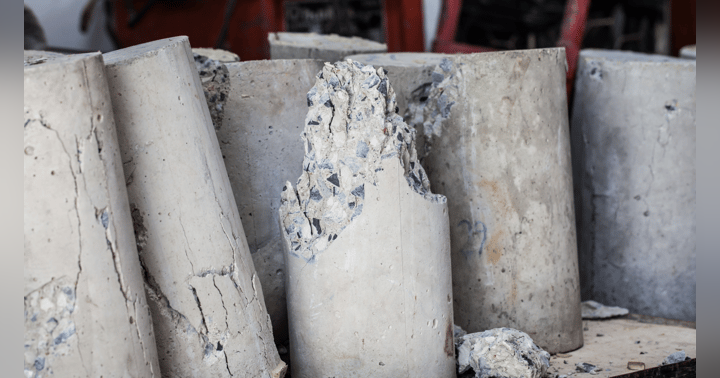Top 5 Concrete Myths Busted with Simple Science You Should Know

If you’ve ever worked with concrete, you know that things don’t always go as planned. Whether it’s cracks appearing out of nowhere or floors that won’t stay level, concrete can be a tricky material. But what if I told you that many of the problems you face on the job site have simple explanations grounded in basic chemistry and physics? Yeah, that’s right. What you might be overlooking could be the science behind it all.
So let’s break it down – no technical jargon, no complicated theories. Just plain, simple science that’ll make you see concrete in a whole new light. Plus, we’ll throw in some handy tips for how to get better results on your next project. And if you’re ready to dive deeper into mastering the craft, be sure to check out Concrete Logic Academy (because let’s face it, who doesn’t want to level up their concrete game?) and reach out for some personalized concrete consulting if you need expert guidance!
1. Moisture Movement in Concrete: Why Warm Air Makes Concrete Sweat
Here’s a fun fact: warm air loves to move to cold surfaces. Think about how dew forms on the grass early in the morning – the warm air causes moisture to condense on the cooler blades of grass. Well, concrete behaves the same way.
When you have a concrete slab that’s cooler than the surrounding air, it attracts moisture from the air, even if it looks dry on the surface. This is a phenomenon known as sweating slab syndrome, and it can be a real headache, especially if you’re laying down new floors or coatings.
Everyday Example: Ever noticed how a cold glass of iced tea gets that moisture on the outside in a humid room? The same thing happens with concrete. The cooler the concrete, the more it pulls moisture from the air, causing problems for flooring, coatings, and adhesives.
Concrete Tip: If you're working with older slabs or slabs that seem to always be damp, it could be this moisture issue at play. Consider using moisture meters and check the temperature of your slab before applying any coatings. Want to learn more tricks to tackle these issues? Concrete Logic Academy has got you covered with courses that dive deep into moisture management.
2. Salt Migration: The Silent Moisture Thief in Your Concrete
Salts in concrete are like those sneaky little thieves that creep up to the surface over time. These salts are hygroscopic, meaning they love moisture. They will actively pull moisture from the air, even if the concrete looks perfectly dry.
Everyday Example: Think of how salt on the sidewalks during winter can draw moisture from the air and form wet spots. In concrete, this is what happens when the salts migrate to the surface. Even though the slab looks dry, it’s silently pulling moisture from the air, causing your floor to fail or your coating to peel.
Concrete Tip: If you’ve stripped a coating off an old slab and noticed moisture coming back up quickly, it could be due to salt migration. This is especially common in older concrete, and getting rid of those salts can make all the difference. Don’t worry if this sounds confusing; our Concrete Logic Academy offers tutorials to help you pinpoint and solve these issues. And if you’re already in the middle of a frustrating project, don’t hesitate to reach out for consulting. We’ll help you solve it before it gets worse.
3. Concrete and Temperature: Why It’s So Hard to Get Consistent Results
Concrete is like a big chunk of ice. Seriously – it’s not as simple as pouring it and expecting the same result every time. Concrete has adiabatic properties, which means the temperature inside the concrete doesn’t change easily. So, while the surface might be drying out quickly, the inside stays cooler and takes its sweet time.
Everyday Example: Remember trying to warm up a big chunk of ice? The outside melts quickly, but the inside stays frozen for a long time. Concrete behaves in the same way – the surface can dry and set, while the inside takes longer. If the temperature isn’t controlled, that’s a recipe for uneven curing and moisture problems.
Concrete Tip: If you're pouring concrete in a hot climate or during the summer, you’ll want to keep an eye on your curing process. Overheating can mess with the moisture balance, which leads to cracks and weakening. Want to know how to control the temperature for a perfect pour? That’s exactly the kind of thing we cover in Concrete Logic Academy. And if you're working on a big project, our consulting services can give you the customized advice you need to get it right the first time.
4. Alkaline Salts in Concrete: The Hidden Culprit of Weak Surfaces
Here’s where things get a little chemistry-heavy – but don’t worry, I’ll keep it simple! Concrete relies on a delicate balance of moisture and alkalinity to cure properly. If there are too many alkaline salts (like sodium hydroxide) present, they can interfere with the hydration process, meaning the concrete doesn’t set the way it should.
Everyday Example: It’s like trying to grow a plant in soil that’s too dry – no matter how much you water it, the plant just can’t absorb what it needs. Similarly, high alkaline content in concrete prevents it from absorbing the moisture it needs to cure correctly, which weakens the surface.
Concrete Tip: Be aware of the alkaline content in your mix, especially if you're using newer types of cement. If you're unsure about what’s going on with your concrete’s curing process, reach out for consulting. We can help analyze your mix and give you a solution that will prevent issues down the line. And if you’re looking to dive deeper into the chemistry of it all, Concrete Logic Academy offers resources to get you up to speed on the latest concrete science.
5. Curing Time and Temperature: Slow and Steady Wins the Race
It’s tempting to want to speed things up – we all love a good shortcut. But with concrete, rushing the curing process can lead to weak results. High temperatures during curing can cause the concrete to set too fast, leading to cracks and poor durability.
Everyday Example: Think about cooking food at too high a temperature. The outside gets burned while the inside is still raw. That’s exactly what happens when concrete cures too quickly – the outside forms too fast, while the inside remains under-cured.
Concrete Tip: If you’re working in a warmer climate or pouring concrete during summer, make sure you're controlling the curing environment. Using moisture retention methods like wet curing or applying proper curing compounds can help your concrete cure at the right rate and avoid cracks. Want to know how to do this right? Concrete Logic Academy has courses on proper curing methods, and we’re always available for consulting if you need a hand with tricky projects.
Understanding the Science Makes a Difference
There you have it – concrete problems, solved with basic chemistry and physics! These aren’t mysteries of the universe; they’re simple concepts that can dramatically improve how you work with concrete. By understanding moisture movement, salt migration, and curing processes, you can avoid costly mistakes and create stronger, longer-lasting concrete.
If you’re interested in mastering these concepts and becoming a concrete pro, don’t forget to check out Concrete Logic Academy. Our courses are designed to help you level up and tackle any concrete challenge with confidence. And if you’re in the middle of a project and need some expert advice, feel free to reach out for consulting – I’m here to help you make your concrete work like a pro!
Let’s keep it concrete! 💪















